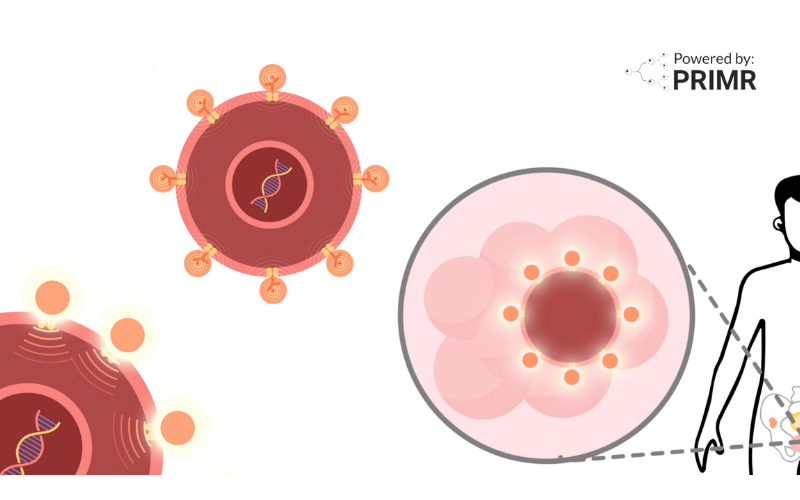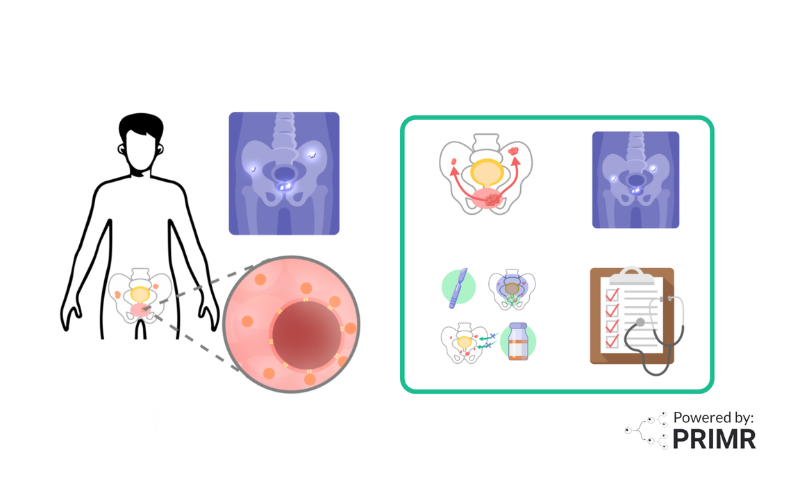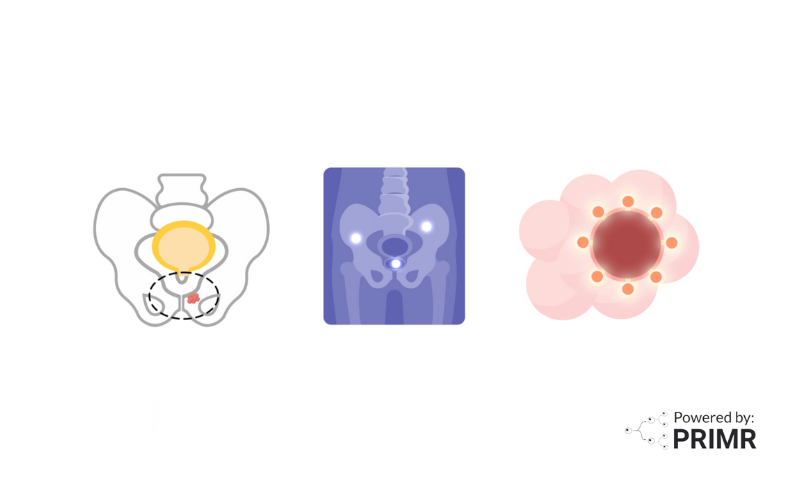35% Enrollment Increase: How PRIMR Boosted Accrual by Adding Value for Patients, Site Teams, and Sponsors

By: David Grew MD MPH
“As of this writing, we’ve reached over 7.5 million people on YouTube, with over 550,000 views amounting to nearly 11,000 hours of watch time."
∗ ∗ ∗
In the second half of this year, PRIMR launched patient and provider education campaigns for a slew of cancer clinical trials. The question has been… can PRIMR content impact accrual? Now the answer is in: PRIMR boosts average monthly accrual by up to 35%. While we always believed we could help trial teams make complex trials easier to understand for everyday people, this level of impact was a bit shocking.
At our core, we’re physicians and scientists first. So we naturally asked the next question: how does PRIMR content accelerate accrual? What is actually happening here?
We went about interviewing our partners and asking questions about content distribution, engagement, and patient feedback. We talked to clinical research coordinators at the site level, clinical operations, and marketing teams with trial sponsors, and the physician PIs who actually care for the patients who consent to enroll in the study. The PRIMR process has been iterative and continues to refine and adapt as we test, learn, scale, and grow. But we’re compiling some key learnings here to spread the word!
PRIMR at Clinical Trial Sites
We’ve come to learn that status quo patient education for clinical trials at the site level is problematic. (That is why we exist!). The most common approach remains glossy tri-fold fliers, although site staff tell us they often find these lining the trash bin in waiting rooms. When they can, site staff prefer to perform face-to-face patient education since this is clearly the most effective (and rewarding). However, time constrains teams’ ability to do this, bumping up against a busy clinic schedule and hospital administrators chirping about RVU productivity.
The result is what in medicine we call “insensible losses.” This refers to the loss of fluids through the skin and while breathing - this kind of water vapor loss is impossible to measure precisely. But it can be significant! In the context of a clinical trial campaign, we don’t even know how many eligible patients are lost who would have enrolled had they been presented with trial information in a suitable way.
When sites open a trial that is leveraging PRIMR content, they’re provided a one-page flier, prominently featuring an attractive thumbnail from the trial video and a QR code that drives to the video itself. Staff set up eligible patients with the content to provide a “foundational layer” of education ahead of a deeper conversation. When patients want to learn more after watching the video, the team moves forward with a more efficient and targeted discussion of trial details.
Sometimes super sites email patients a link to the trial video to prime them for discussion ahead of a clinic visit. This kind of asynchronous learning is borrowed from the “flipped classroom” approach in which learners consume didactic material at home. Then, in-person time with the expert is spent working through higher level discussions and addressing gaps in understanding.
Site teams tell us patients are delighted by the video and freely share it with family, facilitating shared decision making, and reducing the burden on staff to do multiple repetitive calls with geographically distant relatives.
The PRIMR educational video enhanced our clinical trial enrollment process by empowering patients with a visual understanding of trial procedures and treatment provided. Not only did it streamline discussions between patients and our team, but it also fostered a more collaborative and informed environment.
- Senior Project Manager, Clinical Research
Leveraging the PRIMR Platform and Audience
We started PRIMR during COVID because no-visitor policies meant cancer patients came to consults. It was clear most patients struggled to process and retain key information about their diagnosis, stage, and proposed treatments. I had always sketched out my patients’ cancer problems and treatment paradigms with pen and paper, but during COVID I noticed many patients asked to keep the sketches. When I asked why they wanted to keep the sketch (to me they were messy scribbles by the time I was done), patients often said it helped trigger their memory of our in-person conversation. They said they wanted it so they could use it as a guide when they talk to family and friends about their treatment plan.
So I converted the 50 most common cancer explanations into short narrated videos with simple whiteboard graphic illustrations. I posted them on YouTube and across social channels. Ultimately we compiled them by cancer type in an organized library in the PRIMR platform - all open to the public free of charge.
As of this writing, we’ve reached over 7.5 million people on YouTube, with over 550,000 views amounting to nearly 11,000 hours of watch time. On our proprietary platform, we see 3,000 unique visitors per month, all searching for credible, easy-to-digest information about cancer treatments and clinical trials. In this way, we start by delivering value in the form of easy-to-digest educational content.
Because we started off by solving a real problem (making complex cancer problems and corresponding treatments easy to understand with simple narration and graphic illustrations), we’re able to deliver value to patients in a very meaningful way. Our audience has grown organically through word of mouth, and our reach continues to compound exponentially as we bring more trials onto the platform.
Now, as patients learn about standard of care in our content library, they’re presented with “related clinical trials” in the right sidebar. So PRIMR has become a place where patients not only come to learn but also “shop” for cutting-edge cancer diagnostic assays, imaging technology, and emerging therapies only available in clinical trials. When learning about trials, patients are presented with a call to action for screening and enrollment.
In this way, the PRIMR platform has become a two-sided marketplace. Where on one side we have cancer patients and their families seeking knowledge about a new diagnosis, and on the other we have sponsors of clinical trials seeking motivated eligible participants.
In addition, we’re seeing a budding network effect. Each additional trial we add to the platform adds to the value PRIMR delivers to other trials on the platform. Patients who might screen out from one trial may opt in to another trial with slightly different inclusion/exclusion criteria. Also, as our audience grows, more patients are sharing our platform on their social web. This again grows PRIMR’s reach so we can bring value to a wider group of patients. So each additional trial AND each additional patient (3,000 per month and counting) adds value to the other users.
PRIMR Geo-targeted Ad Campaigns
This year we launched geo-targeted ad campaigns to supercharge recruitment above and beyond what we’ve outlined above.
Clinical teams on the sponsor side select sites to target, we buy ad space across social channels in those markets and drive patients to the PRIMR page so they can learn from our educational video. If they want to opt in, we screen the patients and refer them with a warm handoff to the closest clinical trial site.
Sites love it because we only send them qualified leads pre-screened by an MD. Sponsors love it because there is an immediate impact on enrollment. And patients love it because they’ve been searching for a trial and finally found one close to home. We’re delivering value in the form of simple education that can be converted to an action that might save their life.
___
We see cancer clinical trials as the engine that pushes life saving innovations to the commercial market. We’re deeply optimistic about the future - the next decade will bring head-spinning technology to patients, saving lives at scale.
For a free consult about your cancer clinical trials patient education and recruitment strategy - reach out here.
Other Posts

Nuclear Medicine: PSMA Treatment Explained from a Doctor’s Perspective

Nuclear Medicine: PSMA Imaging and Its Impact on Prostate Cancer Care
